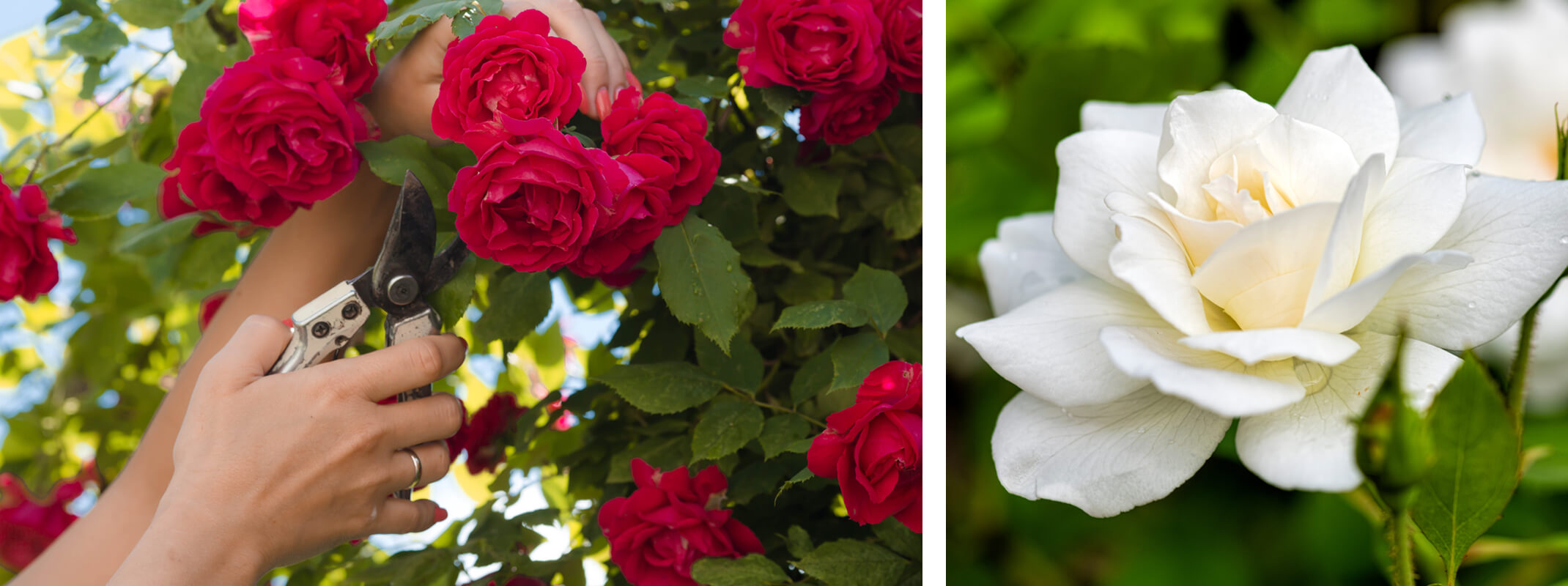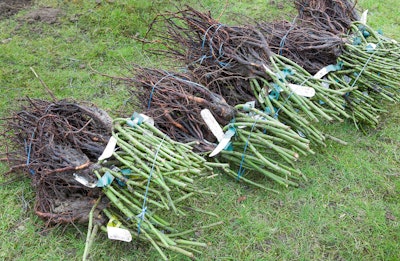 Back to the Be Inspired Blog
Back to the Be Inspired Blog

How to Grow Roses: What You Need To Know
Roses are among the classic flowers that seem to scare off less-experienced gardeners, but there's no need to shy away from them. While some varieties have a reputation for being finicky, newer varieties have been bred for easier maintenance and better resistance to the diseases that plagued your grandmother's old favorites. Some varieties are even container-friendly, meaning you don't even need a real yard to grow these beloved bloomers!
So, why should you try your hand at growing roses this year?
- Their beauty: There's a reason you'll find rose motifs in everything from movies to tattoos; their beauty is undeniable.
- Their amazing fragrance: While there are certainly rose varieties for the scent-averse, most roses give off a gorgeous perfume that you can enjoy fresh or capture in homemade essential oils and potpourri.
- Their "bouquet appeal": If you love to keep a vase of fresh-cut flowers on the table, there's no better source than your very own rose bush!
- They're easier to grow than you think!: Rose care isn't so challenging when you know the basics of what roses need. If you can meet their basic needs and watch them for any changes, your roses will do just fine.
The Essentials of Rose Care
Ready to get started with roses? Aside from water and a suitable container or area of the garden, here's all you need to get growing!

Bareroot Roses: Naturally, the first step to growing roses is to bring some home! At SummerWinds Nursery, we stock a great selection of bareroot roses, which tend to be more successful at establishing their root systems than container plants. Bareroot roses are typically sold from late December until early January.
Potted Roses: At SummerWinds, we carry Weeks® Roses starting in mid-February. These are gorgeous bush roses that have already leafed out and are either on the cusp or at the beginning of their bloom. Many of these varieties are compact enough to continue to grow in containers, or you can transplant them directly into the garden!
Rose Planting Mix: A rose-specific planting mix, like E.B. Stone Organics Rose Grow Planting Mix, has great drainage and an acidic pH to give your roses a great start. You can use it as potting soil for your roses in containers or use it to backfill the roses you've planted in your garden.
Rose Fertilizer and Soil Amendments: When you're first planting your roses, it can be helpful to add a starter fertilizer formulated to give roots a head start like E.B. Organics Sure Start. As your roses get stronger and more beautiful, you can keep them well-fed with a fertilizer blend like E.B. Stone Organics Rose & Flower Food. Always follow product package directions for the right application rates for your plants.
Organic Mulch: Roses need lots of water to wash down all the fertilizer! Maintaining a layer of organic mulch like Redi-Gro Bark Mulch over the root area after planting will regulate moisture evaporation and keep the plant's roots cool in the hot sun.
Disease & Pest Control: Keep fungal infections and unwanted guests at bay with a copper-based fungicide like Bonide Liquid Copper Fungicide and a dormant spray like Bonide All Seasons® Horticultural Spray Oil, both approved for organic gardeners.
Pruners: Don't be intimidated by pruning! Regular pruning of your rose bushes is the key to beautifully-shaped plants covered in healthy blooms. A good set of pruners is essential, especially one that's nice and comfortable to use, like the Corona Ergonomic Bypass Pruners or Corona ComfortGEL® Bypass Pruners in the ¾ inch variation.
Rose Pruning Gloves: Every rose has its thorn—ouch! Protect yourself with sturdy gloves with long sleeves designed to keep your skin safe while pruning those tough-to-reach areas.
Rose FAQs
Q: Do roses like full sun or shade?
A: While some varieties of roses may tolerate some shade, all roses do best in full sun—the brighter, the better! Lots of bright, intense sunlight is crucial for your roses to produce loads of blossoms. Your rose bush should be kept in a location that receives lots of direct sunlight, at least four hours daily, ideally on the south or east side of your home. If your only outdoor space is a north-facing balcony, your roses may not receive enough natural sunlight to thrive.
Q: How do you maintain roses?
A: Roses need to be watered consistently all year long and more frequently in the late spring and summer heat. Starting after the first blooms emerge in April, begin monthly fertilizer applications until October.
While the weather is warm, ensure the soil stays hydrated and keep an eye out for weeds, pests, disease, or "suckers" (new stems at the base of the tree that should be clipped off immediately). Deadhead spent blooms throughout the year to promote longer flowering. Begin spraying roses with a copper fungicide and pest control in late March, following the package directions. As the weather gets warmer, spray the leaves with water before applying to prevent leaf burn.
In the winter, keep the planting area tidy and clear of debris and prune late in the season. After pruning, apply a copper fungicide and dormant spray to prevent early infections and pest infestations from developing as the plant is waking up in the spring.
Q: How do you prune roses in California?
A: This should actually be a two-part question; when is the best time to prune roses in California, and what's the best pruning technique? The best time to prune roses is in January to early February–but don't worry, your new roses don't need this step just yet! As far as your technique goes, remember the goal of pruning is to promote a tidy shape and ample airflow throughout the plant.
First, remove all leftover foliage from the plant—the plant no longer needs them! After the foliage is out of the way, look for branches that are dead, damaged, crowded, or crossed-over. Next, remove any canes thinner than a pencil. Finally, start shaping by clipping canes either a quarter or half-inch above the nearest outward-facing bud eye, cutting at a 45˚ angle, sloping away from any nearby buds. Prune up to (but no more than) one third or one half of the plant back when pruning. When you're done, make sure to clean up all the clippings before you walk away!
The Best Roses for Beginners
There are over 150 rose species and thousands of hybrids, so choosing just one can be a little overwhelming! Here are a few fabulous options to try if you're brand new to rose care:
Henry Fonda (Hybrid Tea Rose): A vibrant yellow rose with deep green, clean-looking foliage. Excellent vigor and disease resistance all season.
Pope John Paul II (Hybrid Tea Rose): This crisp white double-flowered rose is perfect in nearly every way, from its bushy habit and disease resistance to its abundance of beautifully-formed, citrus-scented flowers.
New Zealand (Hybrid Tea Rose): The soft, warm, pink color of this fully-double rose is almost as gorgeous as its incredible fragrance! Also boasts good disease tolerance.
Iceberg (Floribunda Rose): Known as the best landscape white rose around, this gorgeous Floribunda is considered one of the top ten best roses in the world. Remarkably disease-resistant, very hardy, and stunningly floriferous.
Julia Child (Floribunda Rose): Another fabulous yellow rose selected by the culinary icon herself to bear her name. Known for its licorice fragrance, buttery gold color, rounded habit, and glossy green foliage. Another exceptionally disease-resistant rose.
Pretty Lady Rose™ (Hybrid Tea Rose): A breathtaking double-flowered with rosy-purple petals, bright-green glossy foliage, and a spicy peony-like scent. This variety is nice and compact and ideal for growing in pots.
You can explore more bush rose varieties here, or visit us at one of our California SummerWinds Nursery locations to discover our full selection.







